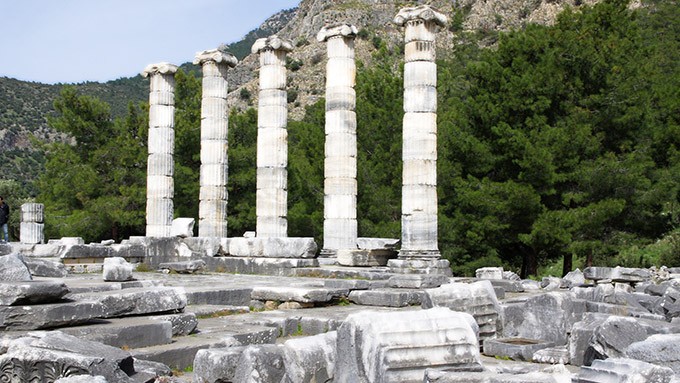
Priene, once a flourishing Ionian city and a member of the Ionian League, was established on Mount Mycale. Initially positioned along the seacoast, with terraces cascading down to the Aegean Sea, it has since retreated inland due to centuries of geographical changes.
The city was founded in the 11th century BC by Ionians, and despite its modest population of 4,000 to 5,000 people, Priene held little political sway. However, its significance as a religious center was undisputed, housing the central shrine of the Ionian League within its territory.
Originally located on a peninsula near Miletus, boasting two harbors facing the sea, the exact location of Priene’s earliest settlement is now lost to history. It fell to Lydian control in the 7th century BC. The birth of Bias, one of the seven sages and a philosopher, in Priene heralded a golden age in the 6th century BC, brought to an end by the Persian conquest under King Cyrus.
In 350 BC, the Persian governor Mausolus initiated plans for a grand new city, which were later continued by Alexander the Great after the Macedonians seized the region from the Persians. Alexander sponsored the construction of the Temple of Athena, dedicating it to himself, while affluent citizens funded other public buildings, leading to rapid urban development. The ruins visible today belong to this era, a testament to Alexander’s architectural legacy.
By the 1st century BC, Priene had lost its direct access to the sea, and by 300 AD, the region, with the exception of Lake Bafa, became isolated from the open sea, prompting the city’s abandonment due to its growing remoteness from maritime routes. However, a Greek village persisted, named Samson, likely in reference to the Biblical figure Samson. This area remained under Byzantine dominion until the 13th century, after which it was absorbed into the Ottoman Empire. Following the 1924 population exchange between Greece and Turkey, the last Greek residents relocated to Greece, leaving only parts of their settlement to be used by the incoming Turkish population.



